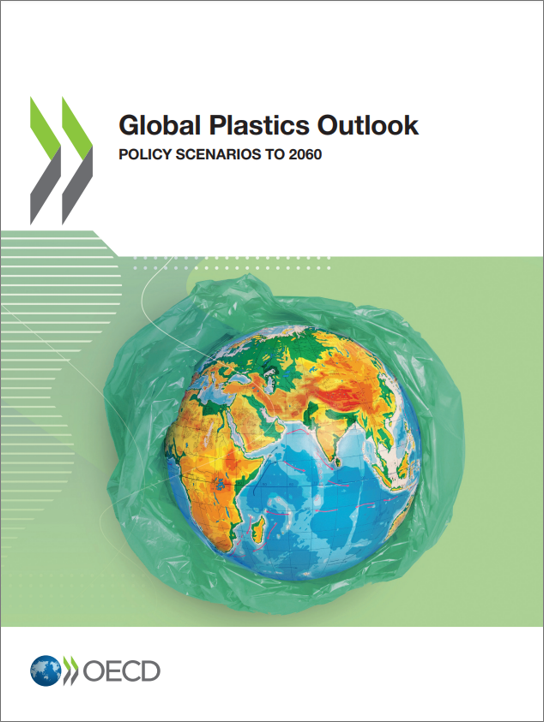
목차
Preface 3
Foreword 5
Acknowledgements 6
Abbreviations and acronyms 14
Executive summary 17
1. Overview and policy highlights 21
1.1 Introduction 22
1.2 An overview of the modelling framework 22
1.3 Scenario analysis for plastics projections 23
1.4 Projections to 2060 in the Baseline scenario 24
1.5 Policy packages to eliminate plastic leakage 35
References 42
Notes 43
Part I Baseline scenario 45
2. Economic projections to 2060 47
2.1 The global population is projected to increase to 10 billion by 2060, with the strongest growth in Sub-Saharan Africa 48
2.2 The engines of economic growth will gradually shift from China to other emerging economies in Asia and Africa 49
2.3 Services will represent an increasing share of the global economy 56
2.4 Production processes will rely on more efficient technologies 59
References 60
Notes 60
3. Plastics use projections to 2060 61
3.1 Plastics use is projected to almost triple by 2060 62
3.2 The drivers of plastics use vary by region 72
3.3 COVID-19 affects plastics use in both the short and long run 78
References 80
Notes 81
4. Plastic waste projections to 2060 83
4.1 Plastic waste is projected to almost triple by 2060 84
4.2 Despite better waste management, mismanaged waste will still almost double to 2060 89
4.3 Plastic waste projections depend on key uncertainties surrounding waste management, trade and COVID recovery rates 98
References 107
Notes 108
5. Projections of plastic leakage to the environment to 2060 109
5.1 Plastic leakage the environment presents a wide range of environmental and human health hazards 111
5.2 Plastic leakage to the environment is projected to double by 2060 113
5.3 Plastic leakage into aquatic environments is projected to almost double by 2060 120
5.4 The projected increase in transport will lead to more airborne microplastics 127
References 129
Notes 130
6. Projections of the environmental impacts of the plastic lifecycle to 2060 133
6.1 Plastics use and waste contribute to climate change 134
6.2 The environmental impacts of the plastics lifecycle are wide and significant 142
References 147
Notes 148
Part II Policy scenarios to bend the plastics curve 149
7. The regional action policy scenario 151
7.1 The policy package in the regional action scenario is broad and regionally varied 153
7.2 The regional action policy package limits growth in plastics use and waste 157
7.3 The environmental benefits of policy action are clear, but plastic leakage to the environment continues 167
7.4 The macroeconomic impacts of the regional action scenario are small 172
References 178
Notes 179
8. The global ambition policy scenario 181
8.1 The policy package in the global ambition scenario assumes immediate global action 182
8.2 Plastics use and waste are largely decoupled from economic growth in the global ambition scenario 184
8.3 The environmental benefits of the global ambition scenario are substantial 191
8.4 The macroeconomic impact is limited, though highest for non-OECD contries 196
References 199
Notes 201
9. Interactions between plastics and climate mitigation policies 203
9.1 Climate mitigation policies complement policy action on plastics 204
9.2 The global ambition scenario contributes to climate change mitigation but only limitedly 206
9.3 The joint global ambition and climate mitigation scenario decreases plastics lifecycle greenhouse gas emissions 209
References 216
Notes 217
Annex A. Modelling framework 218
Annex B. Details on the baseline, regional action, global ambition, and climate mitigation scenarios 275
Glossary 280



